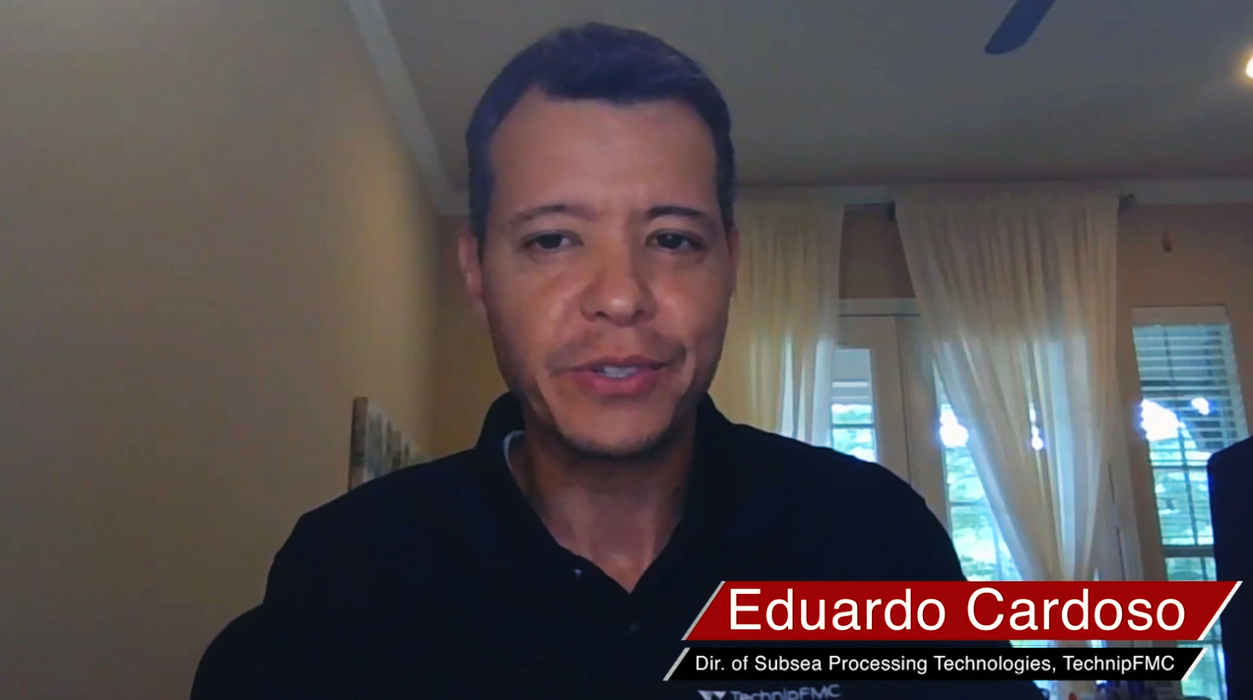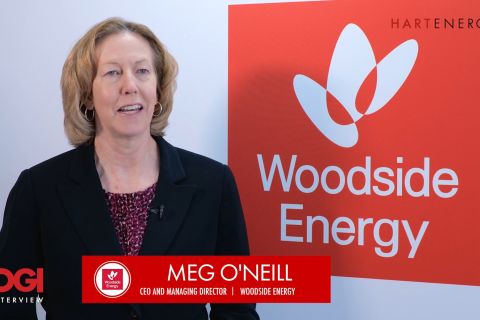Learn more about Hart Energy Conferences
Get our latest conference schedules, updates and insights straight to your inbox.
[Editor's note: A version of this story appears in the September 2020 edition of E&P Plus. Subscribe to the magazine here.]
Today’s smartphones have more processing power than the computing system NASA used to put a man on the moon and bring him home more than 50 years ago. The shared similarity is that without a steady supply of electric power, each would be a useless block of assembled raw materials.
On land, at sea or on the seabed, the challenge of providing a steady supply of electrical power to thirsty industrial consumers is a global one. For the oil and gas industry, the shift from topsides operations to subsea operations is underway. Ensuring safe and reliable subsea operations requires a safe and reliable source of electrical power.
Eduardo Cardoso, director of subsea processing technologies with TechnipFMC, discusses the company’s Subsea Power Distribution Station (SPDS)—a 2020 Offshore Technology Conference (OTC) Spotlight on New Technology award winner—the challenge of powering subsea systems and more in this E&P Plus inaugural “Innovation Spotlight” feature.
E&P Plus: What is the Subsea Power Distribution Station?
Cardoso: The TechnipFMC Subsea Power Distribution Station comprises a variable speed drive [VSD] and transformer that are placed on the seabed, along with power-receiving umbilicals connected to a topside generator.
Each subsea processing system requires a pump for either injection or boosting, and every pump is driven by an electric motor that requires continued changes in the frequency of the power that is feeding the pump. When process dynamic changes happen in the system, the pump needs to respond accordingly and change its speed. To change the speed, we need a VSD, which is the central piece of our SPDS.
Another piece of the SPDS is the transformer. The transformer matches the umbilical transmission voltage levels to the VSD voltage. It`s installed upstream the VSD and downstream the umbilical. These two pieces, VSD and transformer, are typically found on the topside. By relocating them to the seabed, we are decreasing the overall cost of the system while making it more reliable.
Watch the video above for more details on the SPDS.
E&P Plus: How is it different from other options available?
Cardoso: In addition to relocating the system to the seabed, our SPDS is scalable and modular. Each module of the VSD delivers up to 1.5 MW of power. So, if you want to build a 6-MW subsea power station, then you can add more of the modules in parallel to add up to 6 MW.
Current technologies available for subsea power distribution aim for higher power systems, for example 6 MW and up for compression systems. We saw that there was a need for a cost-effective option on the smaller applications projects that were cost-constrained overall and developed the SPDS to meet that need.
E&P Plus: With the focus currently on doing more with less and making incremental advances on brownfield operations with new technologies, what role does the SPDS perform?
Cardoso: The difficulty that we have now is mainly on operating platforms, where there is a limited amount of space and small number of people to execute the work. The real estate is, many times, not available on the platform for a power distribution system, and the cost associated with accommodating the necessary structural upgrades can be substantial.
The SPDS is a very good fit, especially with brownfields, because it overcomes these challenges faced topside. In fact, we can reduce boosting costs by up to 60% on brownfield projects with the SPDS.
E&P Plus: Did the project design start with a fresh sheet of paper, or was it the combination of the best of other technology projects?
Cardoso: It’s a mixture of both. We had the freedom to find a creative solution for the problem, but in search of the core issue, we understood that we also had to address costs, reliability and serviceability.
We could have started from scratch. There’s a lot of brilliant minds all over the world that would have loved to work on a problem like that. Still, we understood that it would be better for us to piggyback on existing technologies, experience and successes in the industry, and try to bring all of those into one program.
That’s why we partnered with WEG, an electrical motor and technology company, to get access to all of their learnings on the 1,000-plus units they have already sold into the land market. We then adapted their technology to the subsea environment, which is our area of expertise.
E&P Plus: What do you see as the next area of progress in the subsea power space?
Cardoso: I see electrification growing. I like to say that, for example, YouTube was available way before high-speed internet was available. You had the video capability, but the infrastructure wasn’t ready to
stream videos at fast speeds. Subsea electrification is to subsea processing as high-speed internet is to YouTube. I can see electrification as an enabling technology for subsea processing.
As we learn more about the benefits and limitations of subsea power distribution, people will be more willing to entertain subsea-to-shore technologies. There will be decisions associated with AC versus DC as distances start to grow. There are advantages to both sides. I think that after 150 kilometers, the industry will start weighing pros and cons. Besides distance, power demand is critical as well. For example, if you have a big subsea production facility with all kinds of subsea equipment, the question of which type of transmission is more economical—DC or AC—will have to be considered further.
At the end of the day, when all of those technologies are more mature further down the road, then the industry will start thinking of offshore power generation and how to make it economically viable.
Check out the latest edition of E&P Plus to see more videos from TechnipFMC's Eduardo Cardoso on the importance of collaboration in these challenging times and how the SPDS team is coming together to innovate and create further advances.

Recommended Reading
NAPE: Turning Orphan Wells From a Hot Mess Into a Hot Opportunity
2024-02-09 - Certain orphaned wells across the U.S. could be plugged to earn carbon credits.
Petrobras to Step Up Exploration with $7.5B in Capex, CEO Says
2024-03-26 - Petrobras CEO Jean Paul Prates said the company is considering exploration opportunities from the Equatorial margin of South America to West Africa.
Exxon Versus Chevron: The Fight for Hess’ 30% Guyana Interest
2024-03-04 - Chevron's plan to buy Hess Corp. and assume a 30% foothold in Guyana has been complicated by Exxon Mobil and CNOOC's claims that they have the right of first refusal for the interest.
The OGInterview: How do Woodside's Growth Projects Fit into its Portfolio?
2024-04-01 - Woodside Energy CEO Meg O'Neill discusses the company's current growth projects across the globe and the impact they will have on the company's future with Hart Energy's Pietro Pitts.
Texas Earthquake Could Further Restrict Oil Companies' Saltwater Disposal Options
2024-04-12 - The quake was the largest yet in the Stanton Seismic Response Area in the Permian Basin, where regulators were already monitoring seismic activity linked to disposal of saltwater, a natural byproduct of oil and gas production.




